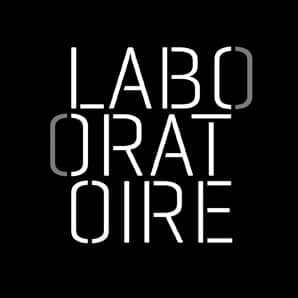Mar 14, 2013 | Laboratoire en
Situated 2000 meters from the Vieux-Port area, the tunnel extending the Boulevard National is both a gateway to and a link between the various districts of Marseille. Railway track acts as a physical and symbolic boundary between the powerful Haussmann district of Longchamp and the highly degraded popular area of the National boulevard.
Every day, countless walkers, cyclists and motorists confront this space, since crossing it worries, burdens or defines people. But it can also detach the passer-by from his daily life, and lead him into a new experience. Even if it makes you uneasy, the place can also evoke – according to everyone’s imagination – the Lourdes grotto, the sky, Plato’s cave or a shadow theatre.
Invited to Marseille for the European Capital of culture 2013, Maryvonne Arnaud and Philippe Mouillon chose to emphasise the potential of the place to obtain an urban scale setting which pulsates with unexpected trajectories, wandering lines and escapism.
The artistic gesture takes advantage of social and generational differences, whether symbolic or aesthetic, to invite them to mingle together.
Just like so many natural caves turned into shrines, this tunnel becomes the receptacle for contemporary ex-votos that draw far beyond the local tradition; they cross cultures, symbolic systems and history in order to build a poetic craft made of words, fragments of hopes and fears, untold tremors and fragile flashes.
Each wish is a kind of dedication, a gift offered up to everybody: I offer my city and my family, and all the unknown, a publicly declared desire, shared here with everyone, creating a community founded on the history bound up in the place.
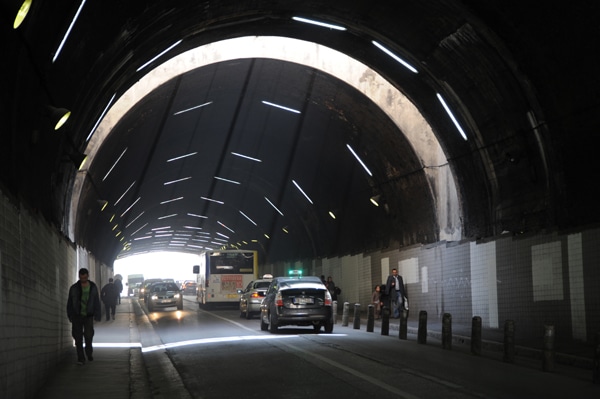
Our votive offerings draw far beyond the local tradition; they cross cultures, symbolism and history in order to build a poetry of words, fragments of hopes and fears, untold tremors and fragile flashes assembled whenever we meet during the course of a year living in the city. Here are a few examples:
I would like to breathe underwater.
I’d like to have a normal life, like other people.
When I grow up, I don’t want to go to jail.
I wish to see the end of the tunnel and find the exit.
I’d like to be back in time and start again with what I have in my head today.
I want to be given another twenty years to live.
I’d like a salary increase.
Clear my head and think about something else.
I would like the boys to find me beautiful.
Have a work permit.
I’d like to find the bright star I lost here.
I wish mankind out of chaos, quick! Including me.
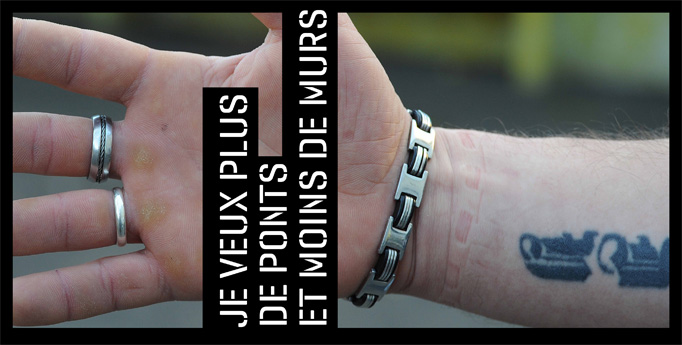


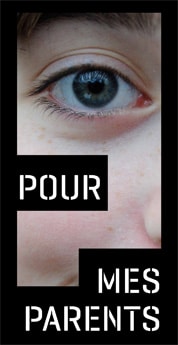

The originality of the piece, Ex-voto, beyond its huge presence, is based on the systemic nature of social interaction and meeting of minds that happens when a work of this nature is undertaken. This strategy of including the originality of each of our lives in a local context combines in fact a territorialized memory with de-territorialized and amnesic customs – those of first-time users. It attempts to revitalize the city, as our paths cross and new generations come along, as has been the case since the dawn of time, in order to produce a local organic fabric, a singular and individual fabric.
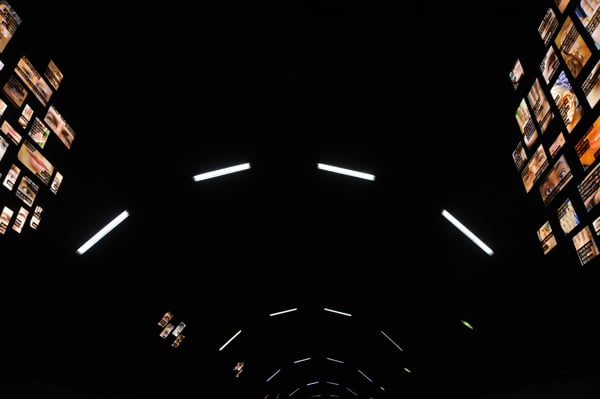
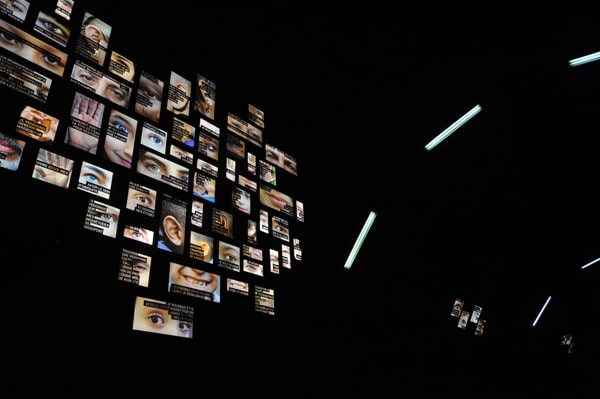
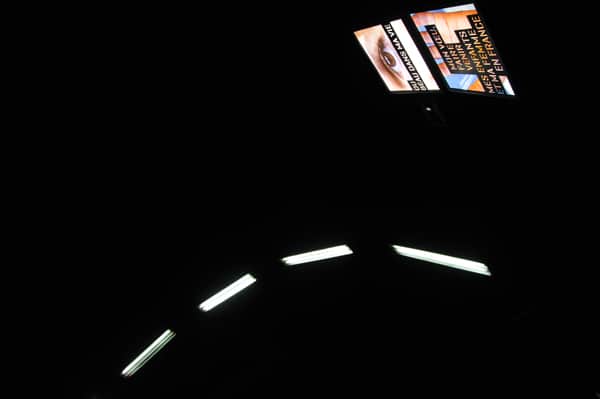
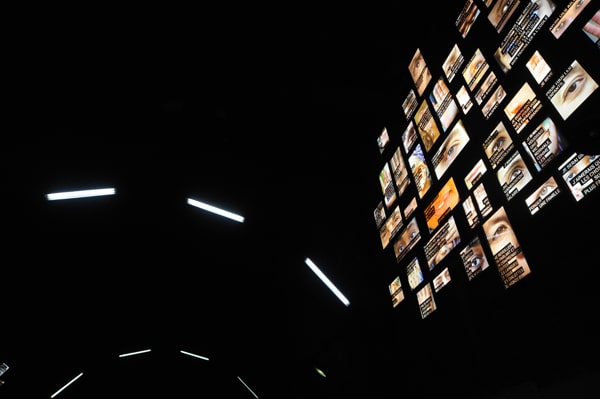
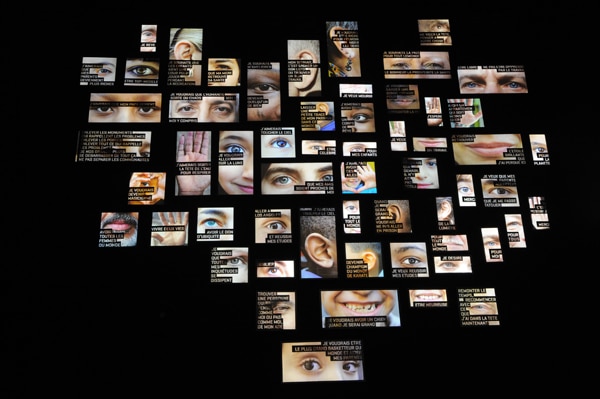
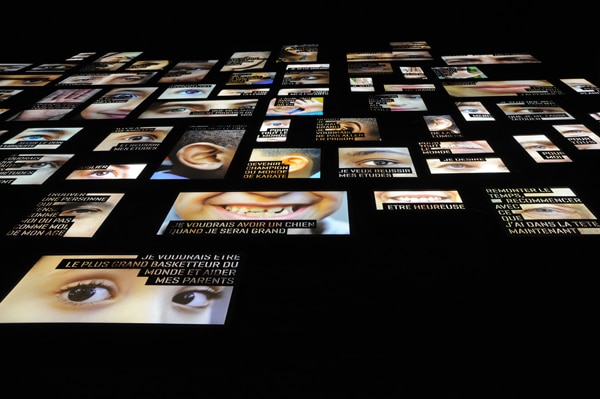
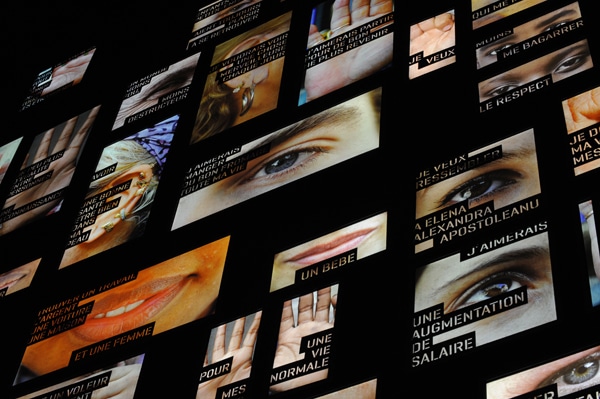
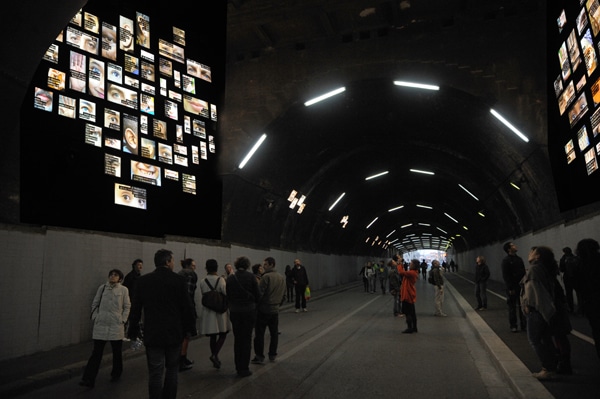
EX-VOTO is an urban-scale curiosity proposed by Maryvonne Arnaud and Philippe Mouillon,
performed by collecting the wishes of the inhabitants of Marseille, over various meetings. This proposal is part of the program called “Quartiers creative” designed and supported by Marseille-Provence 2013
with the financial support of the Fondation Logirem, Logirem, the Caisse des Dépôts et Consignations, the Fonds Européen de Développement Régional, Marseille Provence Métropole and the City of Marseille.
Production of Marseille-Provence 2013.
Artistic design and urban design Maryvonne Arnaud, Philippe Mouillon ; general manager, Pierre Auzas ; technical design, Marian Janda, Michel Arnaud ; graphic design, Pierre Girardier and Philippe Borsoi ;
proximity mediation, Cendrine Chanut.
Jul 10, 2012 | Laboratoire en
Museum of societies and sciences, the Musée des Confluences will be a multidisciplinary museum. Aiming to approach the complexity of the world, it will call on and mix the set of knowledge, in order to study and represent the contemporary stakes. It will dwell on the points of agreement or friction between the complex knowledge of the ancient or contemporary societies, which testify on the movement of ideas, of their emergence and of their reception.
In 2009, the Musée des Confluences entrusted Laboratoire with the conception and the realization of a multimedia ceiling aiming to collect, at a world-wide scale, the abundance of contemporary symbolizations and social practices in order to represent them for a worldwide audience.
This complex and dynamic object heckles and oxygens our representations. It builds a global neighbourhood articulating contemporary identity attachments, questioning the emergence of hybrid forms, and it will assemble the familiar and composite circle of our daily environment with the radical, opulent and unstable otherness of the world system.
Times and references are exchanging, unknown attachments – some scholars, others stunned – are tinkering, behind the local scale of subjects apparently rooted in a stable identity, situated in necessary time and space.
These hybridizations upset and renew the anchors of identity and inherited forms. Millennia stabilities fade or exacerbated, they become embedded in blurred forms of identity or reject them, they go across Brownian turbulences where they mix, panic, tame or disappear for a new millennium.
The visitor is immersed in an asynchronous set of projections that combines the results of a collection disseminated on the planet, in which Maryvonne Arnaud has conducted a photographic encyclopaedia of attitudes and postures of today, a corpus digitally assembled then put into motion illusion by an assembly of 30 images per second, as well as a polyphony focused on the voice textures in multiple languages, assembled randomly by a program developed by the composer Bernard Fort.
With the support of the GMVL
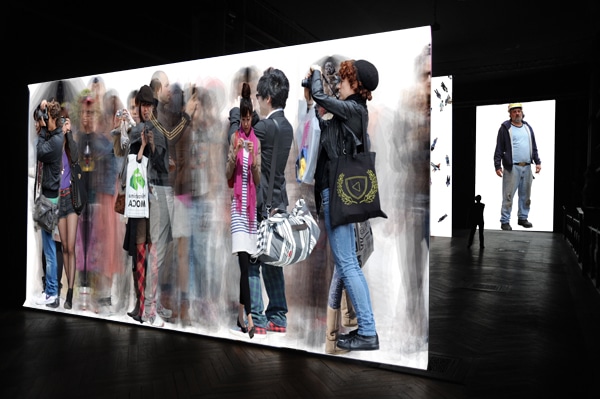
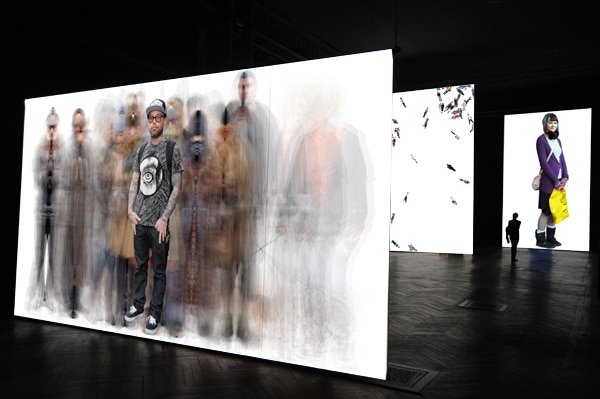
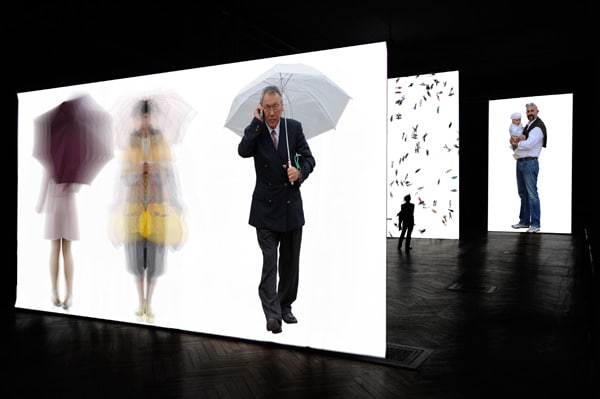
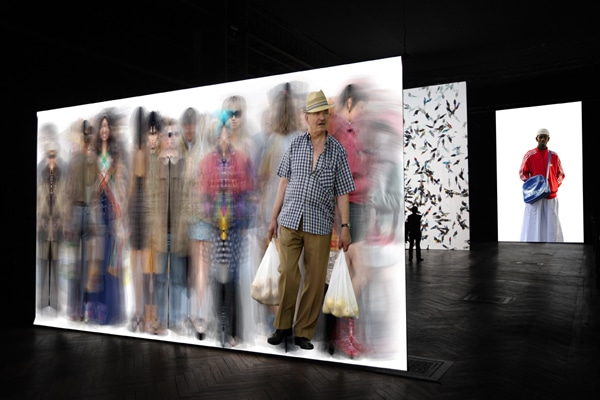
Feb 28, 2012 | editions en, local contemporain en
Texts by Patrick Chamoiseau, Bernard Stiegler, Daniel Bougnoux, Yves Citton, Thanh Nghiem, Chris Younes, Jean Guibal, Olivier Frerot, André Micoud, Janek Sowa, Luc Gwiazdzinski, Henry Torgue.
Images by Maryvonne Arnaud, Sylvain Pauchet.
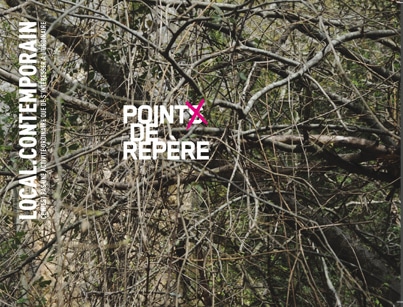
Disorientated! It’s the term we often use to describe the state of incomprehension into which we are plunged by disconcerting situations on a personal level as much as by the changing world in which we live.
There is an overwhelming feeling that stable points of reference which guarantee the correct and more or less permanent direction in a person’s life are vacillating and thrown into doubt. It’s a fact, the world is changing faster than human consciousness. Life’s certainties, family, work, religion, politics, the economy, and even money… are proving to have feet of clay. What will become of us when the points of reference which allow an individual to navigate and position himself are no longer anchored down? Is an era of no shared reference points viable?
You can see a double change: on the one hand a lost quest for beacons and mooring lines to anchor and reference our broken lives, or values that are being consumed as if by fire echoing frenetic consumerism; on the other hand,there is the fevered policing of the individual on a local level and of our day to day lives, trapped in a labrynth of computer passwords, where our every little action registers and is pinpointed on a rather alarming mysterious worldwide surveillance network.
To understand today’s reference points and the magnetic poles that work our compasses, this piece resonates with three ensembles: the regional localities which speak for themselves and bear witness to layers of history; the photography of Maryvonne Arnaud, providing visual commentary, bearing silent witness to reference points; followed by open reflection navigating three fundamentals: the place and its roots; objects, technology and science; language, tradition and meaning.
All these collaborations are a product of the “Workshop of the World”, a series of meetings arranged by Philippe Mouillon and supported by La Criée, the Centre for Contemporary Arts at Rennes. Philosophers, researchers, artists and poets debate freely these issues, building a “World Collective of Doubt” , trains of thought that are far from being doctrine and are more like a game – in both senses of the word: like a fun pastime and equally, a gentle relaxation, which keeps you mobile and active.
“There is no fundamental truth only fundamental errors. Truth is an error corrected.” wrote Gaston Bachelard. It’s with a view to “correct” that is the aim of this piece: to tease out nuances, to have an open mind to every piece of knowledge, ancient or alien, to become involved in the analysis of artistic vision and poetic intuition, in order to turn doubt into a point of reference.
Download the order form
Feb 28, 2012 | editions en, local contemporain en
Texts by Daniel Bougnoux, Jean-Pierre Chambon, Luc Gwiazdzinski, Henry Torgue, Philippe Mouillon, Bernard Mallet, Xochipilli
Images by Maryvonne Arnaud.
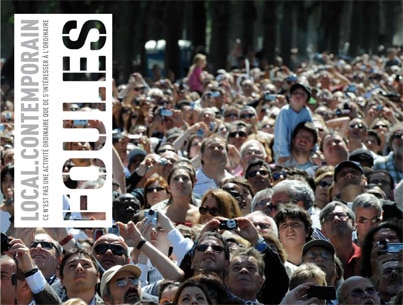
No-one likes a crowd. A crowd is the exact opposite of the individual as king of all he surveys, who in contemporary ideology is persuaded he is at the centre of the universe, making his own choices, divorced from all social pressures.
The media would have us all believe that crowds exist in menacing countries and are from another era: political cohorts in Iran, religious ones in Burma, the masses suffering floods or earthquakes, or more than that, in wealthy countries, the memories of political movements no longer current: political demonstrations, liturgies of anger…
In day to day life, the word “crowd” is no longer proffered to describe those flocking to shopping centres, the conspicuous collective consumption, the traffic jams repeated over and over in the suburbs or our systematic use of public transport.
Nontheless, if pushed from the forefront of our minds, relegated to “elsewhere” or “in the past”, crowds are never far from our lives. Public audiences consistently gather us to one spot, while the media and the latest communication technology form the crowds of our modern age.
Trying to make ourselves aware of the fantastic potential energy of our collective lives, this is a burgeoning vista of aspects of “being together” before it becomes just part of everyday normality for the masses. It’s a major issue because we can never escape being part of a crowd.
Download the order form
Feb 28, 2012 | editions en, local contemporain en
Texts by Bruno Latour, Yves Citton, Janek Sowa, Stefano Boeri, Lionel Manga, Henry Torgue, Daniel Bougnoux, Philippe Mouillon
Images by Maryvonne Arnaud.
Sound chronicles by Laurent Grappe
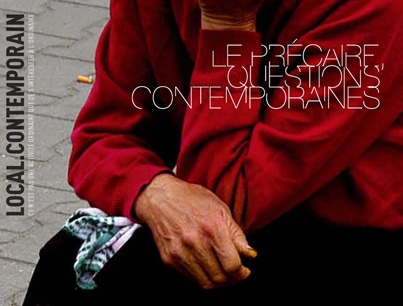
We don’t really have the mental geography that fully equips us to live in today’s world… It’s this claim by philosopher Bruno Latour when we first met that gave rise to the wish to shine a light on how to interpret and represent reality escaping through our fingers like the sands of time. We have chosen to test this fragility in how the world works, the paradox of a society greedy for images and information, to test it by considering the insecurities of our age.
Beyond the obvious and lamentable social fragility, insecurity is one of those great polarising forces of the european social experiment. In a survey carried out in France in December 2007 more than 50% of the inhabitants cited insecurity as one of their main worries, so that it seems that fear of being poor exceeds the actual incidence of it.
To be able to live in this world, to change it, you have to understand how this modern day fear has been created. It’s this work of social (re-)engineering that artists and philosophers from all over Europe are invited here to participate in.
Download the order form
